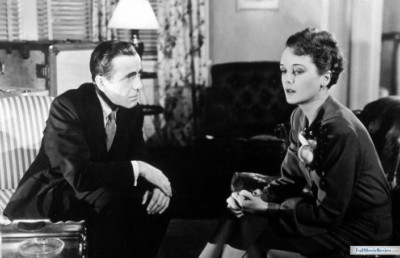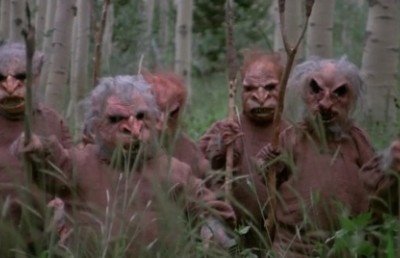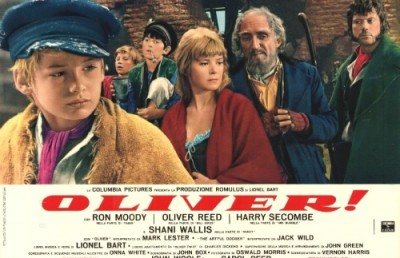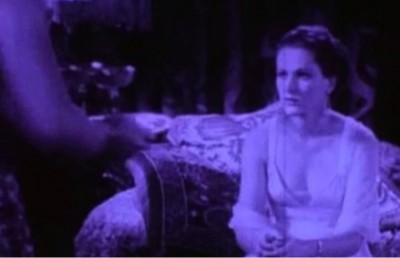Beautiful Light, Vibrant Things, Speaking Minds: Terrence Malick’s To the Wonder
Faith is tested in Malick’s film of love and spiritual devotion, To the Wonder
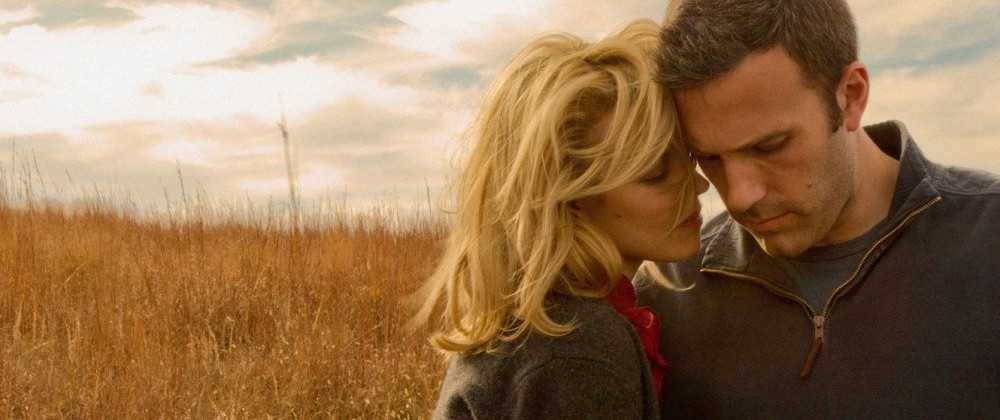
To the Wonder, directed by Terrence Malick
Magnolia Pictures, 2012
(Released 2013)
“Strange it is that men should admit the validity of the arguments for free discussion, but object to their being ‘pushed to an extreme’; not seeing that unless the reasons are good for an extreme case, they are not good for any case.”
—John Stuart Mill, On Liberty
Terrence Malick’s films— Badlands (1973), Days of Heaven (1978), The Thin Red Line (1998), The New World (2005), and The Tree of Life (2011)—have the richness of literature. Each could be said to contain a world, with its own language and look, with its own personas and philosophies. Terrence Malick’s To the Wonder has at its center beautiful images containing a man involved with first one, then another, woman; and a priest who counsels that man at a point of crisis, and also tends members of the community who are poor, ill, or in prison; and the film is less a drama about love or even faith than it is a meditation on faith—faith in self, beloved other, and divinity. To the Wonder stars Ben Affleck as Neil, Olga Kurylenko as Marina, Rachel McAdams as Jane, and Javier Bardem as Father Quintana. Neil is an American who meets a foreigner, Marina, in Paris; and the couple visit an old island abbey (well, islet abbey), a great stone edifice that is a symbol of spiritual yearning and of centuries’ long practical effort, Mont Saint Michel, near Normandy and Brittany. Neil brings Marina and her daughter to live in Midwestern America, in Oklahoma. The film’s cinematographer is Emmanuel Lubezki and production designer Jack Fisk. Its five! editors are A. J. Edwards, Keith Fraase, Shane Hazen, Christopher Roldan and Mark Yoshikawa. To the Wonder is a gorgeous, thoughtful film, which is the least that can be said of each of Terrence Malick’s films. All of Terrence Malick’s films have aspects of philosophy and spirituality, but this may be the most spiritual film he has made yet.
Terrence Malick’s characters are modern, intelligent, and self-aware, and yet they are as troubled as the people we know: driven by ambition, seduced by desire, confused by the pain to be found in the world. It is shocking how much trouble beautiful, smart people can have communicating with each other—knowing what they want, and what they want to say, but not being sure of the reception and response to their articulated feeling or experience. Malick’s people look at each other, and touch each other—but misinterpret, reject, argue. Consciousness is amazing; and it is not enough. Terrence Malick, a Harvard graduate who studied philosophy, principally the phenomenology of Martin Heidegger, has the knowledge to make reference, direct or oblique, to Thomas Aquinas, Augustine, Emerson, Hegel, Edmund Husserl, Kant, Kierkegaard, Marx, Nietzsche, Bertrand Russell, Thoreau, and Wittgenstein—but it is clear that experience is as important to Malick as anything. Terrence Malick, in each of his films, creates a receptacle for what is felt, obscure, lost: the receptacle, or form, is created through images, gestures, spoken narration. Those are the objects of contemplation, standing in for our common life. Does Malick deliver all the brutal complexity of life? Art must be like life but different: or else, what is the purpose? “Lived experience is not grasped as lived, rather, it can be grasped only as object, and this necessarily alters its originary sense,” wrote Andre de Muralt in The Idea of Phenomenology (Northwestern University Press, 1974; page 287). Yet, upon seeing To the Wonder the first time, I thought the narration too delicate, too soft, too much; and upon second viewing it seemed like the rare sharing of very private, very special thoughts, something to be savored. “As usual, Mr. Malick minimizes dialogue, preferring to communicate ideas and emotions through voice-over, montage and music. (Hanan Townshend’s tense, fluid score is supplemented by selections from the 19th- and 20th-century classical repertory.) The director’s methods serve the film’s theme, which is the tension, the imperfect alignment, between human love and its divine correlative,” observed film critic Anthony O. Scott in his April 11, 2013 New York Times review of To the Wonder.
The distinguished, longtime New Republic critic Stanley Kauffmann welcomed the Malick film To the Wonder with detailed appreciation, asserting: “What is most affecting is Malick’s intent. He plainly devised the story to give him a series of panels for the expression of feeling. I can’t remember many films in which love, the sheer transformations of love, has been more movingly conveyed than in the three panels: Neil and Marina, Neil and Jane, Neil again with Marina. What is even more striking is Malick’s technique. It is as if he had modeled it on pointillist painting. Imagine each point as a film moment of, say, twelve seconds, and you have the sensation of a film which is largely composed of such moments. Most of those moments have some kind of motion in them, persons or camera, and you are presented, not with flickers but with a cellular whole. The abbey, fields, a supermarket, a beach, fields, flocks of horses or bison, village streets, city streets—they all become part of an analyzed and re-assembled world in which intensity of feeling is possible and strong” (The New Republic, May 12, 2013).
In Terrence Malick’s To the Wonder, we see a couple, Neil and Marina, in transit—on a train—and soon hear the woman, Marina, remarking, “What is she dreaming of? How calm she is.” Marina could be speaking of herself, or of a woman in a tapestry that we are shown (the comments begin before we see the tapestry). The couple, Neil and Marina, climb the steps To the Wonder, Mont Saint Michel, where there is a garden, where there is a rose with sprinkles of snow around it; and the two people walk on a beach as the tide comes in—and the sensuous Marina feels as if she and Neil are one, the kind of perception that rarely lasts. Yet, she says that she has no expectations, and only wants the two of them to go part of their path together—something that seems realistic. When Neil brings Marina and her daughter Tatiana (Tatiana Chiline) to America, the difference in landscape is startling: Midwestern America, Oklahoma, is plain, despite the beauteous sky. Neil and Marina live in one of those rural developments in which all the houses look the same. Yet, the couple’s relationship is warm and playful at first; but Marina, a foreigner, apparently a Ukrainian who was living in Paris, is isolated, and it seems months before she speaks with a neighbor, who encourages Marina to bring her daughter over to play with her little girl, despite their differing ages. Marina thinks of Neil as quiet but loving (is she projecting onto him?—he seems attractive but distant). Meanwhile, Neil does his work, which involves environmental surveys, checking for toxins (Neil visits a working derrick, and digging and construction sites); and Neil hears the health complaints of various poor people.
“What is this love that loves us?” a woman, apparently Marina, is heard to ask, a question that seems a reference to divinity. Marina’s daughter, however, is not feeling the love: Tatiana has no intimate friends here, as she did in Paris; and Tatiana goes from wondering if Neil will marry her mother to asserting that Neil is not, as he has said, her father. “There’s something missing,” Tatiana says to Marina. A local priest, Father Quintana, wears his vestments and conducts a religious mass in a lovely church, and he walks through the community, tending his wayward flock. The faces we see are etched with experience: the faces of the addicted, the homeless, the poor. Father Quintana talks about different kinds of love, human and divine. Yet the priest feels as if his own heart is cold. Spirituality and religion may be connected but they are not the same; and while religion attempts to give order and meaning to morality and spirituality, religion can become about ritual and social power rather than feeling or revelation. The priest observes the forms, giving mass, hearing confession, but he feels adrift. One of the parishioners says that she is going to pray for Father Quintana, so that he’ll receive the gift of joy. The priest lectures on choice, stating that not to make a choice is worse than making no choice: making a choice signifies commitment. Meanwhile, Neil and Marina grow more distant from each other; and the young woman packs her things and she and her daughter leave.
Neil meets another woman, Jane, a childhood friend, a rancher; and they become a couple. They roam the range together. (It is great to see her work, that she is strong and has resources, despite the ranch’s troubled financial history: she is more than a desirable, nurturing, female presence.) Jane asks Neil to pray with her, a surprise, and an intimate, tender moment. Jane asks Neil if he knows what he wants; and she says that she cannot afford to make more mistakes with men—an example of self-knowledge being no protection, for when Marina finds herself alone and lost in Paris, Marina wants to return to Neil—and does. “What we had was nothing—you made it into nothing. Pleasure. Lust,” Jane tells Neil. Yet, after Marina returns and Neil and Marina marry, all is not well: they frolic and shop and have sex but Marina feels lonely still, not understanding his masculine separateness. (The isolated nighttime shots of various buildings look like a Hopper painting.) Neil and Marina argue. A man, a craftsman (Charles Baker), delivers an elegant, odd musical instrument to Marina—and, later, when she meets the craftsman again, they have a motel tryst, which she confesses to Neil, to his anger. Will he forgive? Can an imperfect love be tolerated by him (as he expected her to tolerate an imperfect love)? The film To the Wonder raises these kinds of questions; and it seems to advise faith. The film is a form that allows for beauty and philosophy, for instinct and intellect, and for faith, love, and doubt: it is the thing that brings together what, otherwise, we have trouble holding together.
II.
Of course, the film To the Wonder is less surprising for those who are familiar with the director’s oeuvre. The beauty and wonder of nature, and the human spirit’s conflicted or damaged state, and the necessity of thought, were a part of all of Terrence Malick’s cinematic stories, no matter how varied the subject matter or setting. Terrence Malick with his motion picture Badlands (1973) gave the cinema world Kit (Martin Sheen) and Holly (Sissy Spacek) in a crime adventure, a work that assumed the recognizable alienation of American youth (a girl goes away with the man who kills her father, the first of several killings that do not seem to distress either: the alienated, self-absorbed Kit and Holly may be avatars not merely of amorality but of the belief that there is no bad publicity). Malick’s Days of Heaven (1978) is set in a beautiful, plain country that would seem to yield a simple life, but its story is actually one of deception, with a variation on a theme that Henry James would have understood: how bodily desire or practical need thwarts morality. In Days of Heaven, Richard Gere is Bill, in one of his most appealing performances, and Brooke Adams is Abby, and Sam Shepard is the rich landowner who is allowed to misread the relationship of his newly hired workers, Bill and Abby: the ill, wealthy farmer thinks Bill and Abby are brother and sister. (There is a similarity there, in the manipulation of a rich person, to The Wings of the Dove, by Henry James.) Shepard as landowner is the user of others who is himself used—but Abby surprises Bill by being moved by the rich man’s sentimental regard.
Malick’s The Thin Red Line, based on a James Jones novel, is one of the most contemplative of war films, set during the twentieth century’s second world war—the populous picture focuses on a sensitive private, Witt (James Caviezel), a man of peace and thought, a man who deserted his company and who is captured and put back into service, in time for an American advance upon the Japanese in the November 1942 battle for Guadalcanal. Through Witt we see the complex life—nature, community—that is being destroyed by man’s violence. Philosopher Simon Critchley, who wrote The Ethics of Deconstruction (1992) and The Faith of the Faithless (2012), wrote about Malick’s war movie: “The ambition of The Thin Red Line is unapologetically epic, the scale is not historical but mythical, and the language is lyrical, even at times metaphysical. At one point in the film, Colonel Tall, the commanding officer of the campaign, cites a Homeric epithet about ‘rosy-fingered dawn’, and confesses to the Greek-American Starros that he read the Iliad in Greek whilst a student at West Point military academy—Starros himself speaks Greek on two occasions. Like the Iliad, Malick deals with the huge human themes by focusing not on a whole war, and not even with an overview of a whole battle, but on the lives of a group of individuals—C-for-Charlie company—in a specific aspect of a battle over the period of a couple of weeks” (Film-Philosophy, December 2002; Vol. 6, No. 38). Simon Critchley himself considered the war film’s issues of loyalty, love, and truth, concluding that truth could be found in the accumulated clash of perspectives.
Terrence Malick makes human existence vivid: the people and things in his cinema are vibrant, worthy objects of perception and contemplation. It is a form of idealism, an idealism he tests. It is also akin to great dramatists and poets writing about elevated but suffering figures, as if to say, Trouble touches even them, with all their advantages. We are compelled to think about the nature and meaning of the trouble. For Terrence Malick, philosophy is poetic. “Malick is performing the function of the artist, of the poet during what Heidegger called ‘destitute times’, when the world is voided of mystery and depth, as language, thought and representation themselves are put to merely instrumental ends. Heidegger accorded to poetry and art an important and specifically restorative function. The poet’s task, as Heidegger insists in What Are Poets For?, is to reveal what metaphysics has obscured: the presencing of Being through the use of evocative, poetic language,” according to “Terrence Malick’s Heideggerian Cinema” by Marc Furstenau and Leslie MacAvoy in Vertigo (Volume 2, Issue 5, Summer 2003), from London’s Close-Up Film Centre.
Q’orianka Kilcher is Pocahontas in Malick’s The New World, co-starring Colin Farrell (John Smith) and Christian Bale (John Rolfe). The New World is a densely beautiful film about the discovery and domination of a wild but peopled land, a film of nature, love, history, and politics. “For the filmmaker, who is more poet than historian, Pocahontas is clearly a metaphor (virgin land, as it were), but to see her as exclusively metaphor would only repeat history’s error. What interests Mr. Malick is how and why enlightened free men, when presented with new realms of possibility, decided to remake this world in their own image: free men like Capt. John Smith (Colin Farrell), who marvels at the beauty of a place where ‘the blessings of the earth are bestowed on all’ while Indians lie bound in his boat, and who claims to love, only to destroy,” wrote Manhola Dargis in her December 23, 2005 New York Times review. The New World is a view of early American history that we do not get usually, with the ambiguities left in. Yet, the recent The Tree of Life, with its focus on family, featuring a nurturing mother and demanding father, figures of grace and will, may be the film that is the truest precursor to To the Wonder, in that it is a story of the challenges of ordinary life and the profundity to be found there. In The Tree of Life, it is easy to see the tensions between what is freely given and what is dutifully earned or expected; easy to see the tensions within the family, between husband and wife, and father and son, and between brothers. To the Wonder focuses, primarily, on a couple, a man and a woman, on a recognizable daily life; and in both films, Malick sees the world—and all the spirits in it.
III.
“The ontological content of philosophy is Being, and the method which is used to clarify and explicate the meaning of Being is phenomenology. Heidegger was a student of Husserl, and at least in part took over Husserl’s transcendental phenomenology and its program of a return ‘to the data themselves.’”
Masterpieces of World Philosophy in Summary Form, edited by Frank N. Magill (Salem Press, 1961; page 887)
More and more, the matters of philosophy and spirituality, especially spirituality, have emerged in Terrence Malick’s films; and they require not merely intelligence and interpretation but respect for spiritual exploration, for a certain kind of faith. He accepts human consciousness as a fundamental fact; and juxtaposes personal morality with social morality, and established religion with spirituality. Malick’s technique is less and less surprising: the large themes and use of beautiful images, poetic gesture, ruminative language, and associative but sometimes fragmented editing. (The film is so elliptical I wondered how much of it was created and augmented in the editing room, with audio recording.) However, Malick gives us particulars: and that is in line with the philosophy of phenomenology, which attempts to elude bland abstractions, and engage the experience of the human being in the world, in the past, present, and future, aware of conscience and choice, accepting of ambiguity and anxiety. Yet, familiarity with Malick’s technique may begin to breed dismissal. Malick is less surprising. Certainly, one watches To the Wonder and knows immediately who the director is. “He works in a shorthand that can sometimes feel facile rather than profound. Images of Neil’s work sampling soil and water at industrial sites and of poor and disabled Oklahomans appear as tokens rather than expressions of social and environmental concern. And the torsos, the sun-dappled fields and the twirling ladies look more commercial than cosmic, as if plucked from advertisements for perfume, high-thread-count sheets or other luxury goods,” wrote A.O. Scott in his April 11, 2013 New York Times review of To the Wonder.
Is the cinematic technique of Malick now facile, too easy? Malick did seem to get some of the most indifferent, even scathing reviews for To the Wonder: from Stephanie Zacharek in the Village Voice (April 10, 2013); Richard Roeper in the Chicago-Sun Times (April 18, 2013); Michael Posner in The Globe and Mail (April 19, 2013); and Peter Rainer in the Christian Science Monitor (April 26, 2013). Yet, we may be judging the film quickly, too facilely. “To call any proposition certain while there is anyone who would deny its certainty if permitted, but who is not permitted, is to assume that we ourselves, and those who agree with us, are the judges of certainty, and judges without hearing the other side,” wrote John Stuart Mill, himself something of a religious skeptic, in On Liberty (The English Philosophers, edited by Edwin A. Burtt, The Modern Library, 1939; page 965). Sometimes it takes a little more effort to see something fairly when you think you already understand it.
“It seems to me that a consideration of Malick’s art demands that we take seriously the idea that film is less an illustration of philosophical ideas and theories—let’s call that a ‘philoso-fugal’ reading—and more a form of philosophising, of reflection, reasoning, and argument,” wrote philosopher Simon Critchley, while discussing Malick’s Thin Red Line (Film-Philosophy, December 2002; Vol. 6, No. 38). The same admonition may be true of Malick’s To the Wonder, in which visits to a church are customary—and one character asks another to pray with her. Can human love last beyond the heat of desire, and the mundane requirements of daily life? Who can see beyond her or his own perspective? Does a divine authority exist and is it knowable to us? Does it care for us? The appeal to faith in the film is overt—and can challenge, evoke, or inspire disbelief. In “Terrence Malick, Theologian: The Intimidating, Exhilarating Religiosity of The Tree of Life and To the Wonder,” the writer Josh Timmermann, contributing to the Notebook (Mubi), an international online film magazine, wrote this: “Malick, in effect, has it both ways, in these loosely intertwined narrative strands: the erotic interaction of the man and woman in the Song of Songs is re-played in the voices and physical movements of Kurylenko and Affleck (whose characters, though named in the credits, are nearly as archetypal as the biblical lovers), while the Song’s allegorical representation of Christ and his Church is embodied in Bardem’s priest. At the same time, Malick is actively reflecting on the theological meaning of one of the Old Testament’s strangest, most elusive—if brief and pleasurable—books. He is asking no smaller or less significant a question here than, what is the nature of love—what is the substance of it? Is the love that animates the bodies of lovers, that provokes such inexplicable despair in the absence of the other’s form, the same love that binds man to God and God to his creations? One need not believe to find the negotiation of these ideas fascinating, even exhilarating, especially when guided by Malick’s singular poetic precision and uncommon thoughtfulness” (published July 22, 2013). Josh Timmermann, who sees Marina as something of a mysterious other, a classic female figure, addresses the hesitance of film critics to embrace and explore the spiritual themes in Malick’s work; and connects To the Wonder to the Song of Songs in sacred scripture and to the writing of religious thinkers such as Augustine and Thomas Aquinas.
IV.
What is surprising about Terrence Malick, and what may invite contempt, is that he asks questions as if for the first time: Malick and his characters can sound innocent, naïve, but, of course, that questioning is what great artists and thinkers have done for ages. They ask and answer the elemental questions for themselves, beyond received opinion. Their efforts are imaginative, liberating. They remind us that it is important to make distinctions between our perceptions and what we perceive: what is perceived may differ from what we have the ability or inclination to see. There are two revelations in the film: one profane and one sacred. The sacred revelation occurs near the end of the film, when the priest realizes that the love and power of Christ can seem to come not from only one source but, rather, it can be found all around him, from all directions. The priest has to be open to that possibility. “Salvation is not flight from the wrath of God; it is accepting and reciprocating the love of God. Salvation is not separation. It is the beginning of union with all that is or has been or will ever be,” wrote James Baldwin (The Cross of Redemption, Pantheon Books, 2010; page 164). Feeling at one with all that exists remains an ideal for many people—and that union is what art, like philosophy, like spiritual faith, encourages. The more profane affirmation in To the Wonder comes much earlier, from a friend of Marina, a friend whose speech is accented—the Italian Romina Mondello—and whom encourages Marina toward greater personal freedom, toward a more experimental perspective and life, encouraging Marina to flee Neil and the Americans with their false faces. The friend advocates life: how alike the sacred and profane can be. What will Marina choose? What did she choose? “Conscience calls me to my possibilities, but I must always sacrifice some of these possibilities in choosing others. In actualizing one I am not actualizing another, and thereby becoming guilty. Every action implies guilt, but it is impossible to exist without acting” (Masterpieces of World Philosophy, edited by Frank Magill; page 893). Marina had chosen Neil above other men. Marina married, and, while disappointed and lonely, betrayed her marriage vows, as her first husband had betrayed his. “Forgive me,” Marina said; and Neil could not. When Marina leaves Neil the second time, she says that she wants to keep his name: she wants to have a trace of their past together.
(Article submitted October 25, 2013)


